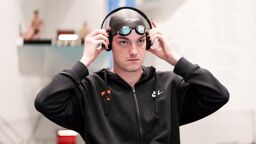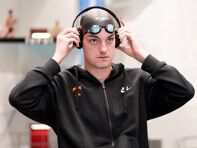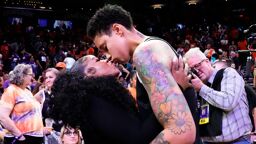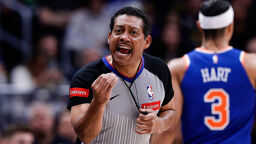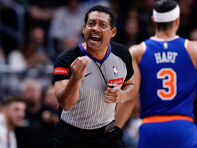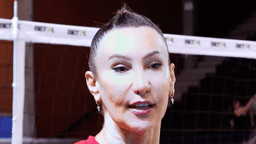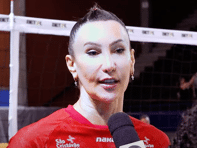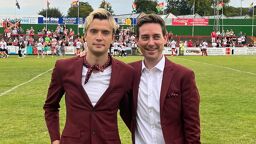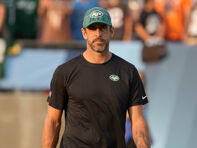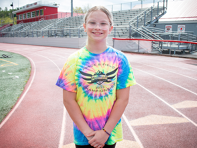(This story was published in 2002)
By: Nat Brown
I had the privilege of spending the 2002 Olympics working for the Swedish and German cross-country ski teams. Why me? And why the Germans AND the Swedes?
Last spring I was asked to set up accommodations and a good working place for the Invisible People who make the skis go fast at the Olympics.
Lars Svensson, who does all the base work for the Swedish and German cross-country ski teams, was planning on bringing over about two tons of the machinery needed to stone grind and prepare ski bases, and needed a house to stay in, and a shop big enough to put the machines and the skis in. He also asked me to join the service team that would be doing the work.
I was very excited to be asked. It was work I’ve done before, for the U.S. biathlon and cross-country teams, but this was the first time I had worked with teams capable of winning Olympic gold medals (we took a women’s bronze in the biathlon relay in the 1984 World Championships, and a silver in the 1987 Biathlon Worlds–but never an Olympic medal). And this was the first time I’d worked with teams that evidently don’t care what it costs: in addition to flying the machinery in from Sweden, the house and shop were $700 per day–for a three-week period!
I’ve known Lars for quite a time, and he was the one who helped me set up my own stone-grinding shop, so to that extent, I was a natural one to think of. As for why I worked for the Germans and Swedes together: The machinery that does stone-grinding–re-conditioning and tuning ski bases–is so expensive (around $60,000 for the new top-level machines) that no one team can afford to buy one, let alone fly it around the world. On top of that, Lars is The Man, with over 110 gold medals to his credit, counting World Cup, World Championships and Olympics. So both teams pooled resources to set it all up, put Lars on contract for the whole season, and voila!
My Partner Says Go
I have to admit that I had somewhat mixed emotions about going. On the one hand, I wanted to work with Lars, I knew I’d learn a great deal, and I knew that it would be good for the reputation of my own business. On the other hand, I’m increasingly tired of travel, and I didn’t know if I could afford to shut my shop down for a whole month during the peak season. In the end, of course, I went. My partner Chris told me to go, and some of the excitement took hold. And I have to admit that the uglier motives of wanting the prestige played a part as well.
In the end, of course, we didn’t take any gold medals. Magadelena Forsberg took silvers in biathlon, and I did get to moonlight for a few skiers from the Czech Republic, Slovenia, Latvia–and the US. And I got to be with some old friends at the end of their careers: I’ve been doing skis for John Bauer and Justin Wadsworth since they were juniors, so even though I had no part in their preparation for these Olympics, it was a huge satisfaction to see them do so well. The trip was worth it.
You don’t normally see a lot of the action as a service person. A typical day starts around 5 a.m. with a weather check. If nothing has changed, the skis will be ready to go, but the most important time of day to be testing wax and base structures is race time, so most service personnel will be out in the test tracks during the actual race. I was fortunate in that so much work had been done before the Games started, and conditions were so stable, that we had far less to do than normal, and I was actually able to watch some races! After the races, we generally head back to the house for lunch and a nap, and then in the afternoon, structuring and waxing begins for the next day, based on the testing and weather predictions. That’s our daily cycle.
Felled by the Flu
Aside from Forsberg, the Swedes had a bad Olympics. Per Elofsson, Sweden’s great hope for cross-country gold, was sick with the same flu that seemingly hit everyone there (including Lars and me). In a sport where you have to run distances of up to 50 kilometers and the time between finish places is measured in tenths of a second, any illness puts you out of the running, but the Heber City Crud was especially bad–I was dizzy climbing stairs!
Still, from my perspective, the U.S. and Canadian results made up for it: Pat Weaver and John Bauer got 16th and 12th in the Pursuit race, for third and second best US Olympic finishes ever, and the best since 1976. The fifth place US finish in the relay was the best the US has ever done, so that again was enormously satisfying and moving. Real kudos went to Justin Wadsworth, who had been sick with the flu all week but managed to find a good third lap somewhere, and held on the place that John Bauer and Kris Freeman had established, proving that had he been healthy, Justin might have given us a Top 10 finish (he was 11th in the end-of-season World Cup in Lahti, Finland, two weeks alter).
Equally exciting was Becky Scott’s bronze meal in the sprint: the first Canadian Nordic medal ever, and the first North American women’s medal ever. She and Justin Wadsworth are long-term partners, so it was a good week for them.
Being Gay Not an Issue
A gay angle? There wasn’t one, really. I was a bit nervous to be driving around Heber City (the Nordic venue) with a rainbow sticker on my car, but the Europeans I was with couldn’t have cared less, and the only other American I worked with has had gay family friends all his life. I did skis for Slovenia as well–but again, being gay is nothing to them, and they always ask after my partner, Chris. I’m out to the American skiers (did a few pairs for them as well)–and they have never been anything but very natural and supportive, though I expect that the goodwill dies out at higher political levels in the ski world…
I did manage to meet up with my friend Joel, one of the only two cross-country skiers I know who are out but that was about it. Ryan Quinn from the University of Utah is the other (and yes, I’m proud to say that I work on his skis in my shop!)
As to the athletes, I really do think that at the Olympics, the athletes have all they can do, to concentrate on the job at hand, which is performance, and especially is they mean to do well, any additional stress is counterproductive. Selfish? Maybe–but it’s what you have to do at that level.
Of course, the big news in the Nordic area were the doping scandals, with medals being taken away, and one Russian skier forbidden to race (which took the Russian women out of the relay). As this came on top of a similar scandal in Finland in last year’s World Championships, one starts to wonder how deep the rot goes, and how long it has been going on.
It is very discouraging to know that there are so many athletes who are willing to steal a medal, and at times, I wonder if it’s even right to bring kids into a sport where you apparently can’t win unless you are prepared to cheat. I suspect that as the news develops, there will also be evidence that the Powers That Be were in deep denial and doing their best to look the other way… But maybe all this will be what was needed really to clean things up. At this point, Johan Muehlegg (the German skiing for Spain who had his 50 km gold taken away) has lost his ski and wax sponsorships, and the Norwegian Ski Federation has declared him persona non grata. We can only hope.
Like Clockwork
From another perspective, the Games were very smoothly run: there were fewer hassles, in spite of an enormous police and military presence, than at any other major championship I’ve been to (out of three Olympics and seven World Championships that’s saying a lot. The French, in 1992 were the most hassle-prone, but no events have been this smooth or this friendly). The unique open amphitheater design of the courses at Soldier Hollow/Heber City allowed the audience to see almost all the action, and from what I heard in the crowd, many people found their first exposure to cross-country skiing and Biathlon very exciting. These were the most enthusiastic crowds I’ve ever seen at a North American Nordic event, and of course the great weather–sunny and not too cold–helped a lot. I hope this translates into more people trying Nordic skiing.
Now it’s back to my own skis shop for the rest of the season. There’s still snow in the Pacific Northwest, and it’s the time of year to start planning next year’s training for the kids I coach. It was a good Olympics–my last, I expect–and I learned a lot and brought home a lot of new equipment.
Nat Brown did ski service for the U.S. Biathlon and Cross-Country Ski Teams from 1979-93. Subsequently, he worked for Belgium and Slovenia. He has prepared skis in three Olympics, seven World Championships and seven Junior World Championships. He is author of “The Complete Guide to Cross-Country Ski Preparation” (The Mountaineers Books) and runs his own shop in Edmonds, Washington. You can visit his web site at www.ultratune.net. He would love to be in contact with more gay cross-country skiers.



